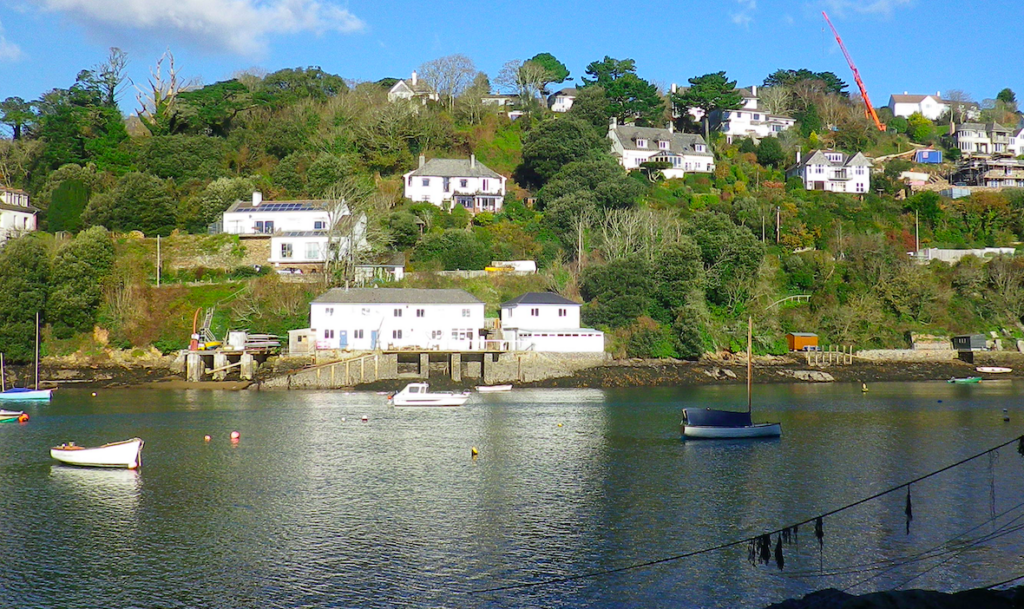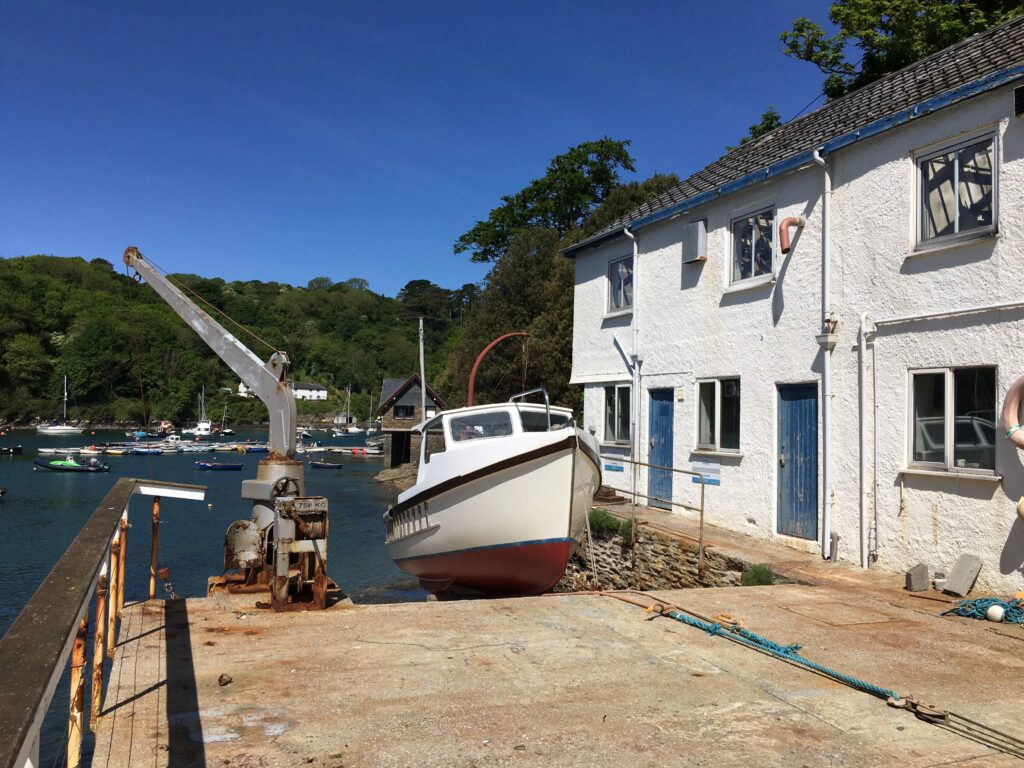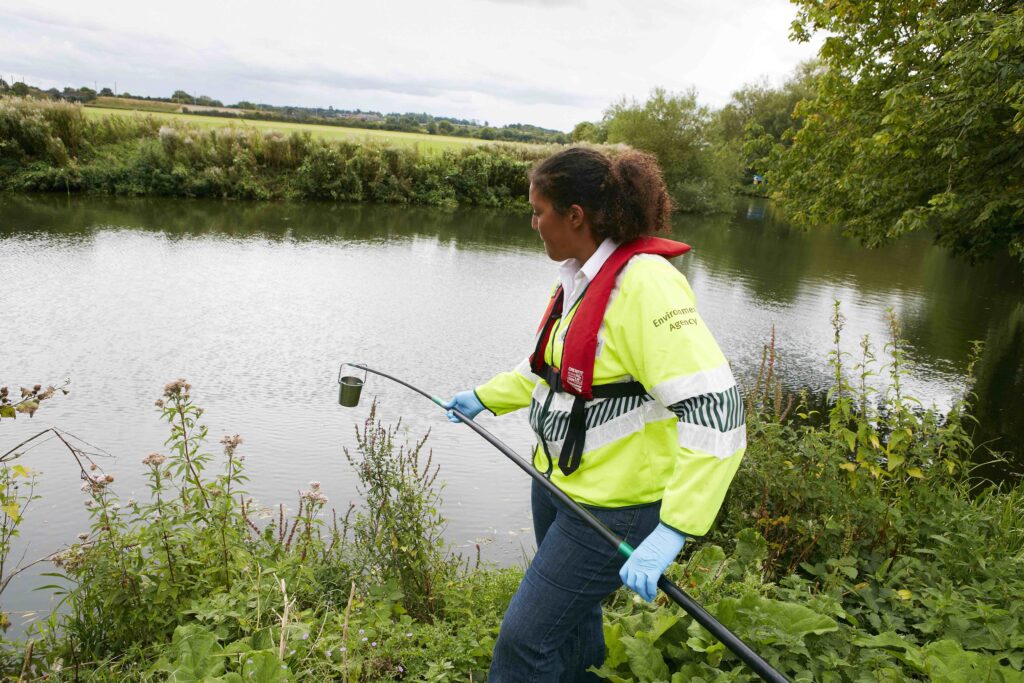
In Focus: Shocking story behind IPL’s £650,000 pollution scandal
While the marine industry may be familiar with International Paint Ltd’s (IPL) recent conviction and fine for polluting the Yealm Estuary, Devon, with banned TBT, the shocking twists and turns of the pathway to court reveals the continuing and pressing need to hold global multinationals to account.
“Why defend the indefensible?” asks Simon Friend, the man initially responsible for the Environment Agency’s court case against International Paint Ltd.
“It always amazed me that the most senior people at AkzoNobel [IPL’s parent company] didn’t put their hands up and say ‘we made a mistake, it’s a small site, it slipped under our radar – we’re sorry.’
“It wouldn’t have cost them much to sort out. Why didn’t they do that?”
Instead, in a story spanning seven years – and continuing – IPL ended up in court, still denying its culpability and was found guilty of polluting the Yealm Estuary in Devon with hazardous waste (see the charges below).
International Paint Ltd fined
The company lost a nine-day court case brought by the Environment Agency in October 2022, and on sentencing in January 2023 was ordered to pay a £650,000 fine, plus costs of £144,992. Seemingly it was also ordered to clear the pollution, estimated at a cost of around £500,000.
 Yealm Estuary, Devon. Image courtesy of Simon Friend
Yealm Estuary, Devon. Image courtesy of Simon Friend At the time, the recorder Simon Levene said:
“I am quite satisfied that the defendant, having closed its eyes for years to the problem, operated a reckless system in which it utterly failed to control the management of TBT and other chemicals.”
The fascinating David and Goliath story of the struggle to bring a multinational to justice, fighting greenwashing, recalcitrance and sheer belligerence has yet to be told. Here MIN speaks exclusively to Friend, the residential property developer and chartered surveyor, whose tenacity and care for the environment brought the case to light.
International Paint Ltd, which manufactures antifouling paint, had run a testing facility on the River Yealm at Newton Creek near Newton Ferrers since 1928. The estuary is a Special Area of Conservation due to its rich flora and fauna. Friend describes the area as “one of the most beautiful and unspoilt estuaries in the south west of England,” and the site as “tiny, with a couple of old cottages and a laboratory on the edge of the river. It would be prime for two riverside homes.”
In 2013 Friend had seen the site was for sale and noted his interest however was not chosen as the preferred buyer. But, after what he believes was four other developers turning the site down, he was asked to enter into the purchasing process at the end of December 2015.
“I was very excited,” he recalls. “It’s a beautiful site on a wonderful estuary. I knew it would be a challenge, but I like those.”
Friend has been into property development for over 25 years, which means he’s no novice when it comes to making sure things are done by the book. And he’s a careful reader.

International Paint Ltd’s (IPL) site centre on water’s edge
“The legal pack from AkzoNobel wanted the buyer to take all environmental risk for what had previously happened on the site,” he explains. “It appeared that all the other developers had pulled out of the transaction due to the absolute insistence of AkzoNobel that the purchaser would provide them an indemnity against all environmental risks and that indemnity would be passed onto successors in title.”
Friend says this onerous provision would have meant that any residential units built would be hard to sell with such a proviso attached. But instead of pulling out of any deal, he decided to look at what those elusive risks might be.
Pollution in Yealm Estuary
“International Paint had supplied its own geo-technical and geo-environment survey which wasn’t that in-depth,” he says. “But it said one tank sample had sediment with tributyltin (TBT), and that the amount within it was recorded as being off the charts – literally a figure which couldn’t be measured.
“In the small print, within the report, the laboratory test results stated: ‘This sample contains very high levels of TBT which are significantly above the validated range for this UKAS accredited method. This is a trace level method and not designed for samples with such high levels of contamination’. That should have raised alarm bells for International Paint. It certainly did for me.”
Formulations containing TBT had been used as a coating to prevent the build-up of organisms and plants on ships’ hulls in the 70s and 80s. But it proved to be so toxic to the wider marine environment that it was banned from use on small vessels in the UK in the late 1980s and was banned completely worldwide during the 2000s.
Understandably concerned, Friend decided to send his own geotechnical consultant to further test for contaminants on International Paint’s site and take samples from the estuary as well.
“I wanted to establish the levels of contamination and assess the ongoing risk,” he says.
“Our findings on site corroborated the findings that a tank in the quayside (previously used for testing marine paint panels) was highly contaminated with tributyltin.
“Our investigations also found raised levels of TBT in estuarine sediments around the outfalls of the testing tanks. We were also informed by the site caretaker that a bung in one of the tanks had become dislodged during storms and that for many months, possibly up to 18, tidal activity had meant that sea water was mixing with sediments in the tanks on every high tide.”
Friend says he reported the team’s findings to both the local land sales agent for AkzoNobel and the Crown Estate who own the estuary (and leased the quayside area, where the tanks are located, to IPL) and says the Crown Estate was: “extremely concerned at the complete breach of the terms of the lease.”
At this stage in the purchase, Friend told AkzoNobel he would continue with the purchase subject to it sorting out the tanks prior to completion, and also getting rid of its onerous legal risk caveats for off-site liabilities.
Eventually, after what Friend describes as a “very difficult” time with the AkzoNobel lawyers (including the request that Friend sign confidentiality agreements – he refused), he was told the tanks would be cleaned-up and new ongoing ‘risk’ proposals were made by AkzoNobel. Theoretically this could have been a suitable end to the story, if the contaminated tank was cleaned professionally. But it didn’t quite pan out that way.
The flushing of the tributyltin
In a chance meeting in May 2016, while looking at another potential development site nearby, Friend (and a third-party land agent) bumped into the then caretaker of the IPL site. The caretaker was on his boat at a quay.
“I asked him about the clean-up of the tanks and remediation of the IPL site,” says Friend who was expecting to be notified when the works were carried out, “and he said that he had cleaned out the tanks himself.
“I was pretty taken aback, especially when he said he had washed the sediments out of the tank through the bung and into the estuary.

View from the IPL site over the estuary
“It seemed incredible to me that a company like AkzoNobel could allow such a thing to happen and even to allow their own employee, who I guess was simply ignorant of the real contamination issues, to carry out this work.”
Understandably concerned, and knowing full well the levels of TBT were off the scale in one tank (the other hadn’t been tested), Friend re-engaged his geotechnical consultant to retest the site, and the estuary.
“The results confirmed that the estuary sediments tested at the outfall of the quayside tank, which previously showed elevated levels of TBT, showed such high levels of TBT they could not be registered in laboratory testing. They matched what had been previously detected in the tank.
“It’s my opinion that it seems almost certain that despite reporting to AkzoNobel in March 2016 that serious breaches in the tanks had led to some contamination of the estuary, rather than actually cleaning and remediating the tanks as promised, further contamination of the estuary occurred, deliberately and negligently.
“Although we couldn’t prove a direct link at the time, it seemed almost certain.”
Where does the buck stop?
Shocked and dismayed with the new survey findings, Friend decided to bypass the difficulties he was experiencing with the company’s lawyers with whom he was dealing and, at end of June 2016, he wrote to AkzoNobel’s then CEO, Tom Buechner. In a lengthy email he explained the situation and asked Buechner to consider the potentially serious consequences for the local environment, and people’s health (oysters have been farmed there for centuries).
In the email, he suggested that Buechner self-report the tank flushing incident – and the contamination consequences – to the Environment Agency.
“I also informed him I was reducing my offer on the property from £1,000,000 to £500,000 subject to contract, because of the increased risks associated at the site due to the actions of AkzoNobel and the ongoing contamination and increased market risks,” says Friend. “I still wanted the deal to proceed but tried to give AkzoNobel an opportunity to rectify what had happened and suggested changing the transaction to a ‘subject to planning deal’ so that all the information could be laid out before the relevant planning authorities and the Environment Agency.”
 The ex-IPL site on the estuary
The ex-IPL site on the estuarySmoke, mirrors and TBT
From his point onwards, Friend says the belligerence worsened.
He recalls an in-person meeting in London in October 2016 with representatives from AkzoNobel (including the legal director of AkzoNobel legal group, legacy manager Europe AkzoNobel and global environmental affairs manager AkzoNobel) where he says one of the three senior representatives present admitted verbally that the sediments from the tank had been flushed out into the estuary, but then subsequently the group doubled-down on a ‘reverse flow’ argument.
In what Friend calls an “astounding and ludicrous” move, he says AkzoNobel claimed the TBT had come into the tank on tidal flows from the estuary and built up in concentrations in the tank and therefore the TBT had not originated from its site.
Friend once again wrote to Beuchner in late October 2016, urging AkzoNobel to take the initiative and self-report otherwise he would be forced to do so. But he says AkzoNobel stuck to its reverse-flow hypothesis, and denied any responsibility for the state of the estuary.
So on 1 November 2016 Friend contacted the Environment Agency. He handed over 400 emails alongside the reports.
The Environment Agency agreed with Friend. There was clear evidence of wrongdoing.
Six years later, the case came to court.
 Environment officer conducting water sampling. Image courtesy of Environment Agency
Environment officer conducting water sampling. Image courtesy of Environment AgencyExpert witness confirms major toxic effect
As part of the case, the Environment Agency employed a specialist Dr Michael Waldock who was able to measure the amount of TBT in the estuary and found it to be 80,000 times above the legal limit.
Waldock, whose work had previously led to TBT being banned, carried out a review of sample analysis results from sediment from the tank, and from the adjacent estuary for the Environment Agency. He found that nine out of 11 samples exceeded the safe limit for TBT and concluded that the TBT levels in the estuary were sufficient to have had a major toxic effect on marine life there.
The Guardian reports that recorder Levene said: “Though I don’t believe anybody directed the TBT should be washed out of the tanks, it is suspicious that the TBT was only discharged when a potential purchaser for whom the presence of TBT in the tanks was a serious problem came along.
“I am quite satisfied that the defendant, having closed its eyes for years to the problem, operated a reckless system in which it utterly failed to control the management of TBT and other chemicals. I’m satisfied that [a caretaker] emptied the TBT into the estuary and that is something that should never have been allowed to happen.”
Previously, the judge, sitting at Plymouth crown court, also raised concerns about what he called ‘astronomic’ levels of mercury that were also found in the river. The Food Standards Agency is to investigate whether this could have got into the human food chain via shellfish.
Damage control
After the sentencing, IPL, via parent AkzoNobel, told The Guardian (15 Jan 2023) it regretted and took ‘full responsibility for the fine imposed by the court as a result of its conviction for the environmental release in its former research & development facility in Newton Ferrers in 2016’.
But James Wimpress of the Environment Agency says IPL denied any wrongdoing during the investigation and throughout the trial. He says the company, owned by a multinational firm, and with a turnover of £134m in 2020, failed in its duty of care to the environment. Wimpress is hoping that the outcome serves as a warning to other companies that the agency will not hesitate to pursue those that act without regard to their responsibilities.
In a statement, Ralph Slikkerveer, a spokesperson on behalf of IPL, also told MIN on 8 March 2023: “IPL is a responsible company, and we take our environmental obligations very seriously. The company has been in operation for over 120 years and has no prior environmental convictions or cautions.
“We are working closely with the Marine Management Organisation regarding the next steps to remedy contamination at the site.
“We have also conducted a full review of the events of 2016 and adopted the learnings to ensure an incident of this nature does not occur again at any of our sites. The company takes its responsibility seriously and accepts the fine.”
But what does working closely look like?
MIN was keen to understand what next steps meant in practice, and also the nature of ‘working closely with MMO’. A subsequent statement from AkzoNobel on 10 March says:
‘We are currently developing a remediation plan in consultation with an external and independent technical expert and a formal remediation permit will be applied for with the Marine Management Organisation (MMO). These processes are expected to take several months to complete, and remediation will commence without undue delay after the remediation permit has been granted by the MMO.’
An MMO spokesperson says: “We can confirm we received an enquiry from Geosyntec Consultants. Our discussions are at a preliminary stage and we cannot comment further at this time.”
AkzoNobel continues: ‘We regret and take full responsibility for the incident and are taking appropriate measures to address the situation.
‘The offence relates to the unfortunate and accidental release of contaminated sediment from one of two tanks located on the site into the foreshore adjacent to the quay. The contaminated sediment was not expected to be in the tank and was a legacy remnant from the use of Tributyltin based antifouling products, which were widely tested at our former Newton Ferrers site for many years prior to the International Maritime Organisation’s global ban on the application of TBT-based paints to ships from 2003.
‘TBT contamination remains isolated to the direct foreshore of our former site (mainly within a 10-20-metre area) and there are low levels of TBT elsewhere in the estuary. This low rate of spreading has likely prevented a potential impact on the wider estuary. This is corroborated by an independent study commissioned by the Environment Agency, which found no evidence of an ecological impact of the residual contamination in the area.
‘We will of course take on board all our learnings from the release and our subsequent review to ensure an incident of this nature does not occur again at any of our sites.’
‘The site was sold in 2021 and is under new ownership and management. Both tanks were decommissioned and cleaned out more than five years ago.
‘We take our environmental responsibilities very seriously and we are very sorry that the environmental release occurred.’
‘Deny, deflect and drag’
But while that may be the case, Friend is still raw. He says during the trial the defence accused him of threatening to report the pollution simply so that he could get a better commercial deal – which he denies.
He believes the way AkzoNobel treated the whole saga is appalling and notes that there were regulatory concerns during the 1990s about the site, including complaints from oyster fisherman about levels of TBT. Friend thinks that the higher echelons of AkzoNobel knew there were problems – after all it’d been laid out in the company’s initial geotechnical report so to fight it for so long was extraordinary.
And then, he’s also incensed that, out of all the people who work at a senior level for AkzoNobel and were involved with the case, only the site’s caretaker turned up in court. (“The caretaker had worked with AkzoNobel at the site and ought to have known about the situation,” says Friend. “I don’t believe it was his fault. There needed to be proper protocols in place.”)
With this in mind, he is unhappy that IPL can claim it takes its responsibilities seriously when much of the evidence appears to say it doesn’t.
“I want AkzoNobel to be held responsible for its actions,” he says. “I was so disappointed that a company like that would act in that way. They shouldn’t get away with it. All credit must go to the Environment Agency as it brought the case. It was time consuming and complex, but they pursued it all the way.”
A further statement from AkzoNobel, on behalf of IPL (13 March) says the company has: ‘always acknowledged the presence of TBT in the estuary at Newton Ferrers.
‘The quay tank was intended as a water feeder tank only, taking water from the estuary to other tanks at the site. No sediment was expected to be in the tank as it was an ingress tank. Unfortunately, some sediment appears to have inadvertently discharged into the estuary. The sediment was a legacy remnant from the use of TBT based antifouling products, which were widely tested at the site. We accept the findings of the court and have actively engaged with the MMO since.’
The company also states: ‘There was a representative of International Paint Limited physically present in court on each day of the trial, as well as by video conference. The company’s legal team was also present throughout the trial. Our global R&D Director, Ralph Slikkerveer, was present during the sentencing hearing.’
In AkzoNobel’s recent annual report – published Spring 2023 – there are many words dedicated to its sustainable business. It says it has its people, the planet and paint at the heart of everything it does.
“It’s so easy for large corporations to use this sort of language and yet it’s worse than meaningless,” Friend says. ” It’s greenwashing and it’s really depressing. Presumably there are whole departments who gush this stuff out, but on the ground it doesn’t seem to happen.
“When I wrote to Buechner in June 2016, I quoted one of AkzoNobel’s then Code of Conduct videos. It said: ‘here’s the thing, it’s precisely those choices, the small ones, the split-second ones that define who we are’.
“Well, they made choices at the highest level to deny, deflect, and drag out the case for seven years. But fortunately the jury could see through that.”
Between 2 September 2015 and 27 October 2016 International Paint Ltd caused a water discharge activity otherwise than as authorised by an environmental permit, namely the discharge of hazardous waste sediments into the river Yealm estuary from the Quay Tank at 101 Yealm Road, Newton Ferrers. The said sediments being hazardous waste due to the presence of elevated levels of tributyltin (TBT), copper, mercury and arsenic, contrary to Regulations 12(1)(b) and 38 (1) of the Environmental Permitting (England and Wales) Regulations 2010.
Between 2 September 2015 and 27 October 2016, at 101 Yealm Road, Newton Ferrers, being a person who produces controlled waste, International Paint Ltd failed in its duty to take all such measures applicable to them in that capacity as were reasonable in the circumstances in that they failed to prevent the escape of waste, namely sediment containing elevated levels of tributyltin (TBT), copper, mercury and arsenic from their control, namely the Quay Tank at the above premises, contrary to section s 34(1)(b) and (6) of the Environmental Protection Act 1990, contrary to s.34(6) of the Environmental Protection Act 1990.
The post In Focus: Shocking story behind IPL’s £650,000 pollution scandal appeared first on Marine Industry News.
